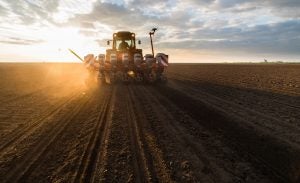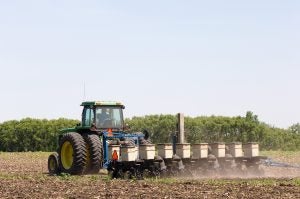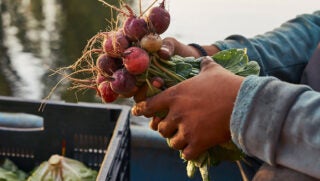From soil quality to making sure implements are functioning, there are important things to pay attention to as planting-season preparation takes root
The climatologists are calling for a warm, wet spring, and that means planting preparation begins yesterday.
Granted, most producers begin preparing for the next planting season immediately upon harvest. Whether dressing the ground and planting cover crops, or using no-till strategies, successful farmers know the importance of year-round maintenance operations.
From the quality of the soil to making sure your implements are functioning and checking that your tractor parts and electronics weathered the winter months, there are some important things to pay attention to as planting-season preparation really begins to take root.
These five pieces are vital to ensuring you’re set to hit the ground running when you want to start planting:
1. Check your gear
Before launching into any spring work, make sure the tractor, planter, and all related equipment are ready to go. Checking into a good online parts distributor like Quality Farm Supply wouldn’t hurt. In addition to free shipping, the company offers expert advice and technical support, not only about parts but about production as well.
Parts to be sure to check before planting inevitably involve the planter, and seed meters are as easy to damage as they are to replace by yourself. Upon inspection, you might discover they actually require an entirely new seed tube kit. From planter hoses to wheel arms, most of the parts needed can be installed yourself with a little help from YouTube or a manual.

2. Check your soil
In terms of nutrients, performing a routine soil test never hurts, especially depending on fertilization strategies involving cover crops. If a cover crop is to be tilled under, consulting the local extension office and getting an update on weather predictions is also a good idea.
The last few years have brought warm, wet springs with them, and 2021 appears to be trending in that direction as well. Working wet soil improperly can lead to compaction, no-till or not, so planting schedules as all producers know can become quite fluid. That said, when the soil is right, have the gear ready to roll as timing is indeed everything.
3. Check your spray strategies
Warm wet springs require different spray strategies than dry seasons. Consultation with the local extension office and suppliers can help growers get the right plan together in advance.
Keep in mind that no two seasons are exactly the same, and every detail matters when it comes to applying chemicals or other inputs to the field. To that extent, whether one has their own spray equipment or they’ll be contracting it out, parts often go bad. Whether it’s a 100 PSI Liquid-Filled stainless steel gauge or a 5,000, make sure all the parts are working correctly, otherwise application will not be correct.
Technology has changed a bit since the old days when Grandpa measured by hand. Modern farmers are using wireless AgSmart camera kits, which include both cameras and monitors. While the ground is still frozen, now might the time to consider a system upgrade.

4. Check your fertilizer and seed strategies
Before loading up the wagons and heading out for work, be sure to have the needs of the ground in mind. Soil tests are an invaluable guide to any fertilizer strategy, and consultation with local suppliers and the extension office can certainly help.
Wet springs present a number of unique problems as opposed to drier years, particularly in terms of nitrogen loss for corn. Depending on the timing and level of saturation, nitrogen fertilizer can be lost in the soil due to denitrification. As a general rule of thumb, if, when you’re driving through the fields, mud is sticking to the tires, it’s definitely a wet soil.
5. Stay informed
Farmers know the value of information, and with 2020 now over and done, many are hoping for a return to normalcy in 2021. Don’t bank on it. Consider that the U.S. Energy Information Administration is predicting Brent crude oil spot prices to average $53 per barrel in both 2021 and 2022 compared to $42 per barrel in 2020. U.S. diesel prices averaged $2.55 per gallon in 2020 compared to $3.06 in 2019, and the EIA forecasts those to move to $2.71 this year and perhaps $2.74 in 2022.
Producers know the impact fuel prices have to their profitability, especially during the planting and harvesting seasons. Meanwhile, crop prices remain dependent on trade negotiations with foreign partners, particularly the Chinese, and it’s getting tougher to predict the outcome of those deals with a new administration in office.
Brian Boyce is an award-winning writer living on a farm in west-central Indiana. You can see more of his work at http://www.boycegroupinc.com/. This article was written on behalf of Quality Farm Supply.


